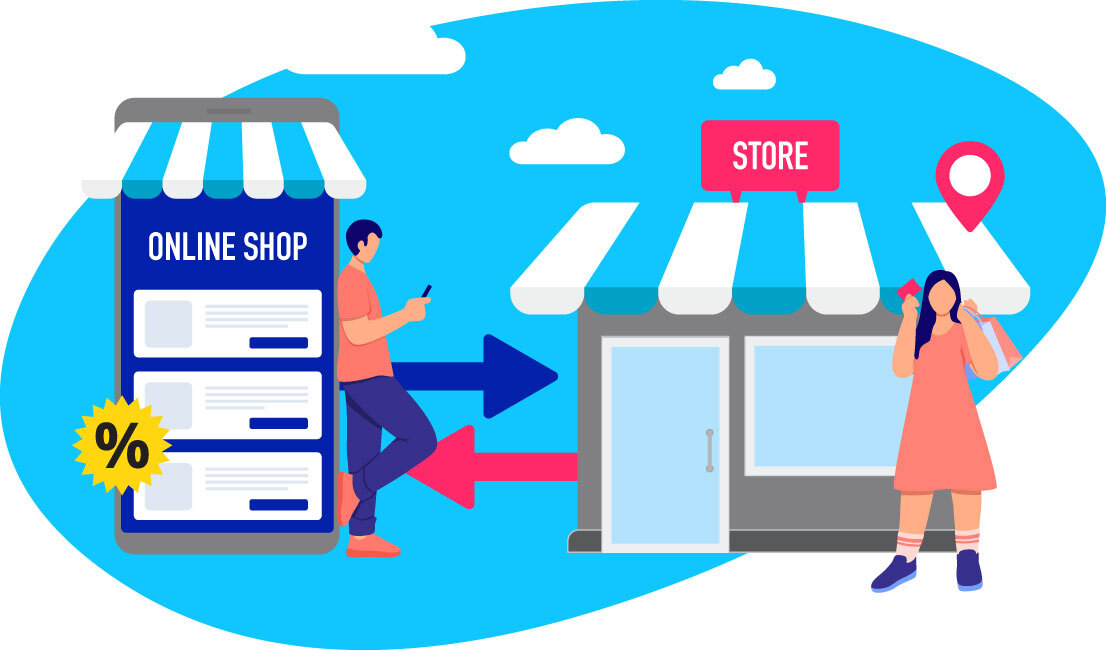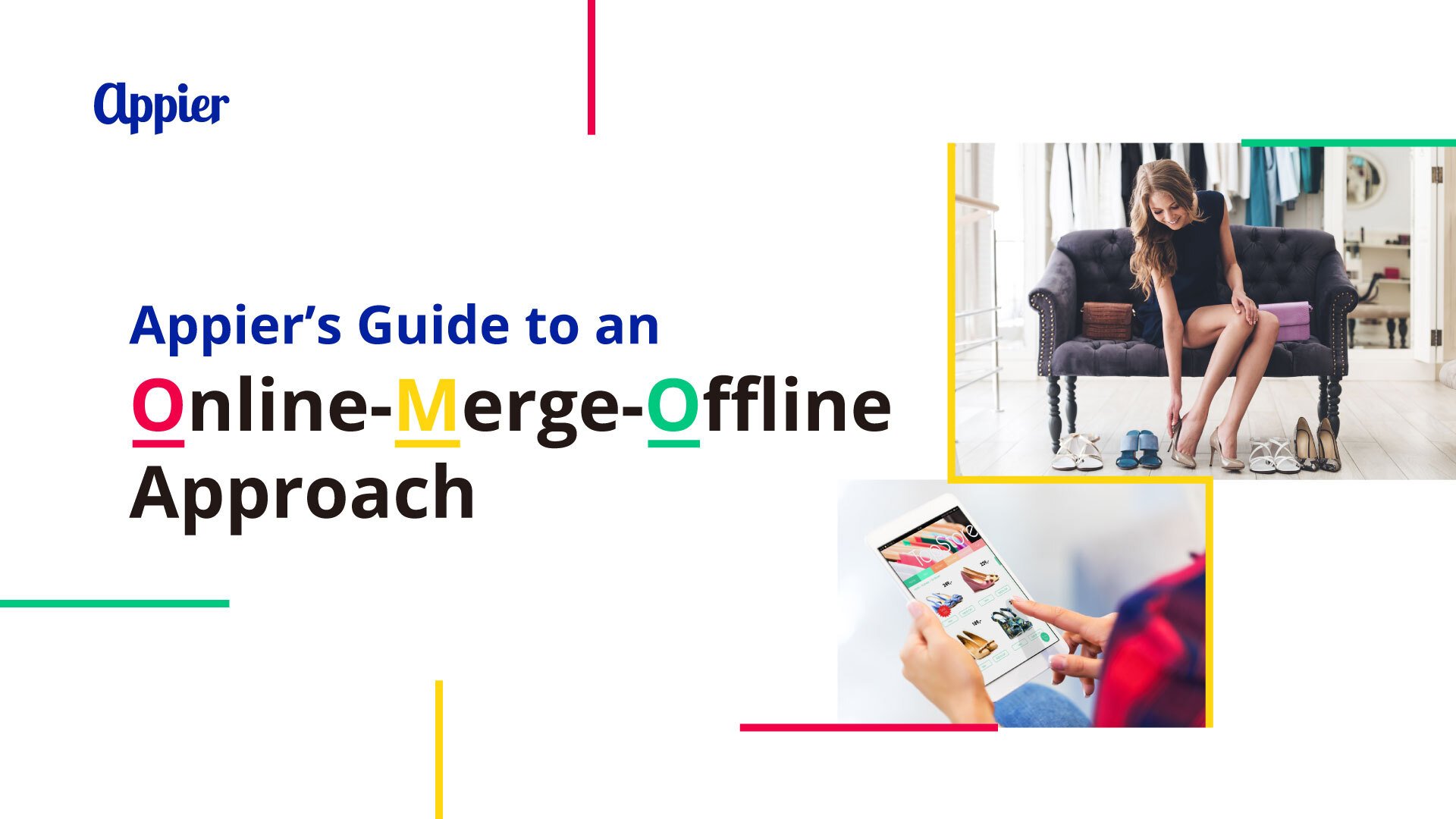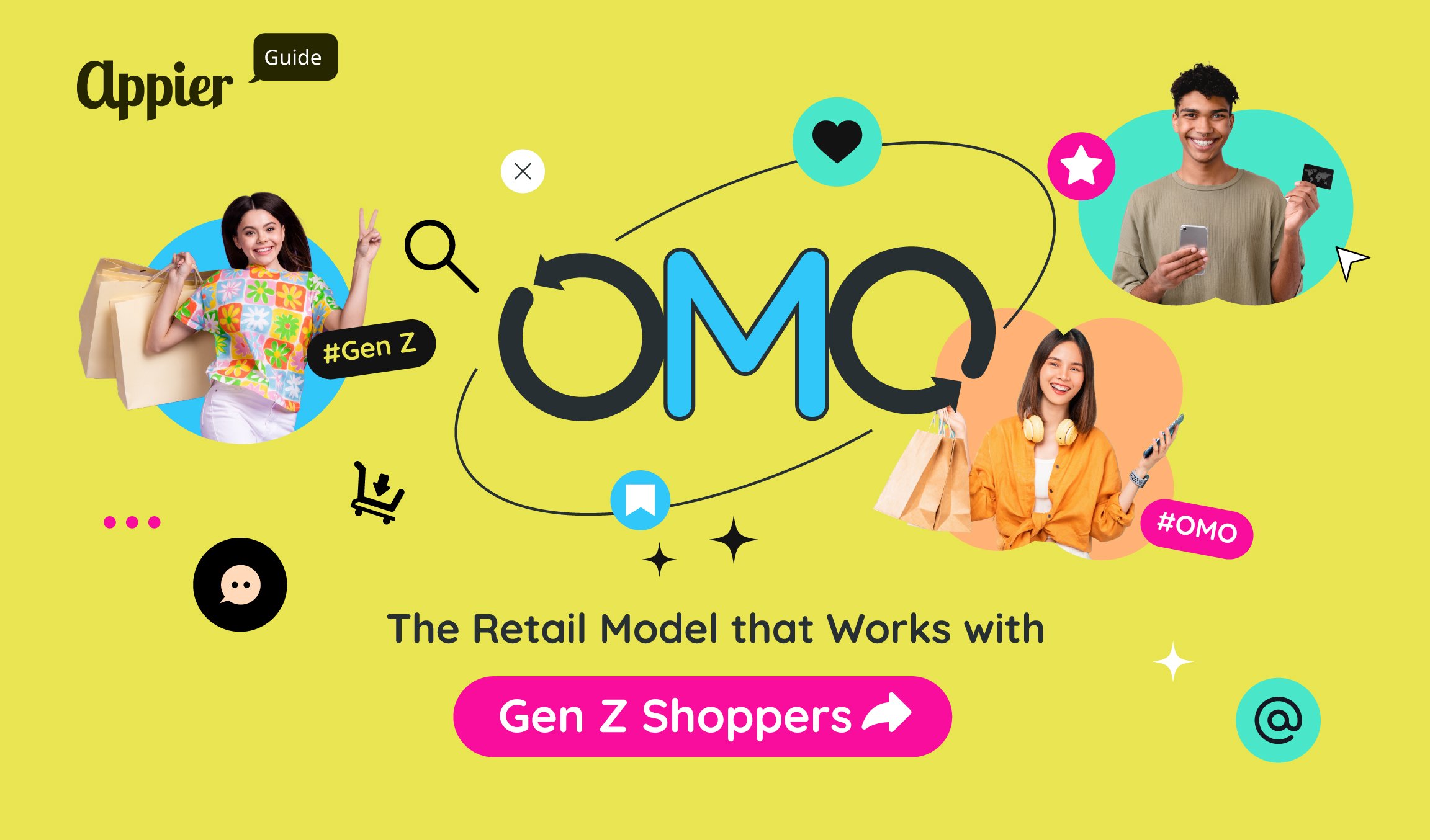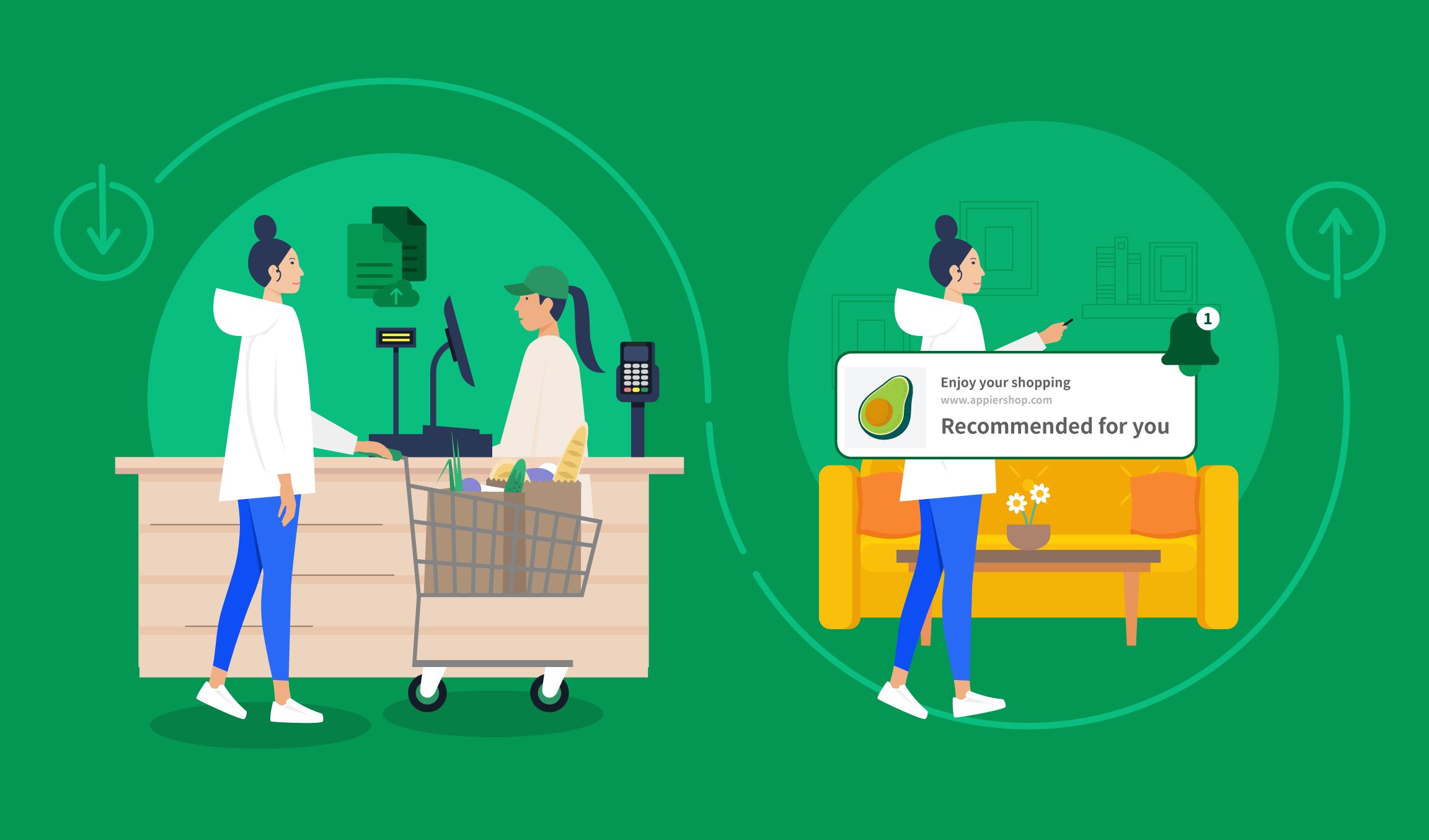8 min read
In the rapidly evolving digital era, businesses are witnessing a fundamental transformation in their marketing strategies. OMO (Online-merge-Offline) marks a significant departure from traditional marketing approaches, blending online and offline experiences to forge a new consumer shopping journey.
What is OMO?
OMO stands for "Online-merge-Offline," a marketing strategy that seamlessly combines customer interactions and shopping experiences from both the online and offline realms. This approach not only merges various sales channels but also unifies customer data and experiences, striving to craft a holistic customer journey. At its heart, OMO seeks to dismantle the divide between the online and offline worlds, leveraging data and technology to elevate and enrich the customer experience, thus realizing a genuine merging of the two spheres. For an in-depth understanding of OMO, please refer to our guide, “Appier's Guide to an Online-Merge-Offline (OMO) Approach."
Difference Between OMO and O2O
While both OMO and O2O (Online-to-Offline) aim to connect online and offline dimensions, they differ quite significantly. O2O is mainly about directing online traffic to offline brick-and-mortar stores. In contrast, OMO adopts a more holistic strategy. It encompasses not just the traffic conversion but addresses every aspect of the customer's experience, whether it occurs online or offline. OMO's ambition is to establish a cohesive, interactive shopping environment where the lines between online and offline are seamlessly blended, offering a shopping experience that is both more personalized and interactive.
| Items |
Online to Offline、Offline to Online |
Online merge Offline |
|
Definition |
The model of online shopping and ordering, followed by retrieving or experience at an offline store. |
Integrating online and offline customer data to provide a seamless shopping experience. |
| Goal |
Enhancing the online visibility of physical stores to increase the online conversion rate. |
Creating a seamless shopping environment that blurs the boundaries between online and offline. |
|
Requirement |
A robust network, online ordering, and offline delivery system. |
CRM systems, marketing technology tools, and Internet of Things (IoT) devices. |
|
Scenario |
Ordering food, clothing, and other goods on an online platform and then picking them up in-store or dining there. |
Smart homes, intelligent retail stores, and personalized shopping experiences. |
|
Impact |
Reliant on the collaborative interaction between consumers and physical stores. |
Revolutionizing the entire shopping experience with technological innovation. |
Table 1: Comparison of Differences between O2O and OMO
Why Opt for an OMO Strategy?
In today’s swiftly evolving digital business landscape, formulating an OMO (Online-merge-Offline) strategy has become increasingly essential. OMO enables businesses to gain a deeper understanding of their customers and cater to their needs, offering a shopping experience that is both personalized and seamless. This strategy not only bolsters customer loyalty to the brand but also propels business growth. Particularly effective for the Generation Z demographic, OMO resonates with younger consumers who desire shopping experiences that are both consistent and tailored to their preferences. The three key benefits of adopting an OMO model for brands are:
- Enhanced Data Integration
One of the primary benefits of implementing OMO is the improved capability for data integration. This extends beyond merely linking data across various channels to encompass a more profound analysis and comprehension of such data. Data integration is instrumental in accurately predicting and understanding customer behavior, enabling businesses to tailor their market strategies more precisely and make more informed business decisions. - Hyper-Personalized Marketing
OMO also facilitates hyper-personalized marketing, a significant advantage for brands seeking to deepen their customer engagement. By combining data from both online and offline sources, brands can acquire a nuanced understanding of each customer’s unique needs and preferences. This deep insight empowers companies to devise highly individualized marketing strategies and campaigns, adding substantial value to the customer experience. Not only does this approach increase customer satisfaction, but it also reinforces brand loyalty and competitive standing in the market. - Boosted Operational Efficiency
The implementation of an OMO strategy significantly enhances the operational efficiency of a business. By seamlessly merging online and offline data and processes, companies are equipped to manage their inventory with greater precision, streamline supply chains, and deliver quicker customer service. This integration not only leads to a reduction in operational expenses but also plays a crucial role in elevating customer satisfaction levels. The ability to synchronize various aspects of business operations under the OMO model results in a more efficient, responsive, and cost-effective management system, directly benefiting both the business and its customers.
How to Implement an OMO Strategy?
The deployment of an OMO (Online-merge-Offline) strategy involves a comprehensive approach, encompassing several critical components, as outlined below.
- Establishing an Omnichannel Presence
A vital component of OMO implementation is establishing a robust omnichannel presence. For example, in the retail sector, businesses must not only solidify their online presence but also create impactful experiences in their physical stores. A true OMO strategy demands extensive integration across both realms to facilitate seamless customer data management, ensuring a consistent and smooth shopping experience. By unifying all channels, brands gain a more holistic understanding of customer shopping behaviors and preferences, enabling them to offer more tailored products and services. - Leveraging Technology
Technology is a cornerstone in propelling the OMO strategy forward. This involves employing advanced analytics, AI, and machine learning to process and interpret extensive customer data. These technological solutions provide businesses with the capability to glean valuable insights from intricate data sets, refining marketing strategies and customer engagements. Furthermore, embracing cutting-edge digital tools such as virtual fitting rooms, augmented reality (AR), and virtual reality (VR) significantly enhances the in-store customer experience. Not only does this boost customer engagement, but it also delivers a more personalized and interactive shopping journey. - Transforming Organizational Culture
Successful OMO implementation also hinges on transforming corporate culture and organizational structure. This transformation entails cultivating a culture of inter-departmental cooperation, fostering innovation, and ensuring that all employees have a comprehensive understanding of the OMO strategy. Such an approach guarantees the effective internal execution of the OMO strategy.
Ready to integrate the OMO strategy into your business framework? Appier offers leading-edge AI technology capable of instantly analyzing customer data and producing actionable insights at the press of a button. Contact us for further information and to harness the full potential of OMO in your business operations.
Case Studies of Successful OMO Implementation
Appier's technology and solutions are pivotal for businesses looking to successfully implement OMO (Online-merge-Offline) strategies. The following are three case studies where Appier played a crucial role in aiding businesses to effectively implement OMO:
- Audi Taiwan's Transformation with LINE:
Audi Taiwan revolutionized its LINE official account into a miniature CRM platform. This initiative aimed to offer a comprehensive digital experience by providing personalized services such as updated event information and test drive bookings. This strategy resulted in one-third of Audi car owners linking their LINE accounts and 20% of maintenance requests being processed through the Audi mobile assistant platform. Additionally, they initiated an electric travel diary campaign, inviting car owners to share their travel stories, thereby fostering a community of electric vehicle enthusiasts. For more information, refer to the success story of Audi Taiwan's strategic implementation of OMO to develop a versatile LINE service. - Better Milk's Multichannel Integration:
Better Milk implemented Appier's enterprise solutions such as AIQUA, BotBonnie, and AiDeal, effectively merging offline transactional data with online user activities. This integration strengthened customer profiles, enhancing sales decisions across various channels and crafting personalized digital experiences. This approach not only facilitated cross-industry collaborations but also significantly improved online e-commerce conversion rates. Utilizing AI to identify and target hesitant customers with discounts during the Mid-Autumn Festival, Better Milk achieved a 33% increase in on-site conversion rates, optimizing both marketing effectiveness and customer satisfaction. For more insight, take a look at the success story of Better Milk's strategy for unifying data across all channels. - Formosa Optical's Data-Driven Approach:
Formosa Optical leveraged Appier's AIXON customer data science platform to amalgamate online and offline data. Employing AI-driven solutions and RFM (Recency, Frequency, Monetary value) model analysis, they segmented customers into two categories: high-value and dormant. Integrating this with Appier’s AIQUA AI personalization cloud, they offered AI-tailored product recommendations and disseminated pertinent content and promotional messages across multiple channels, including web, app, EDM, and SMS. This strategy of delivering personalized content and promotions at optimal times enhanced the overall customer experience. For a detailed understanding, explore Formosa Optical's success story in its journey to creating an OMO customer experience.



